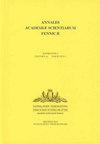三十年来的社会大脑假说:解构邓巴数字的一些哲学陷阱
IF 0.9
4区 数学
Q2 Mathematics
引用次数: 0
摘要
社会脑假说是在30年前提出的,用来解释灵长类动物的大脑比其他所有动物都大得多。该理论认为,灵长类动物生活在异常复杂的社会中,因此需要一台大型“计算机”来管理所涉及的关系。随后提供的支持这一观点的核心证据是,一个物种的社会群体规模特征与其大脑大小之间存在简单的统计关系,而人类也符合这种模式。然而,测试进化论假设会引发一些经常被忽视的具有挑战性的哲学和统计学问题,我们需要非常小心地确保我们测试的假设是我们认为我们正在测试的。在这里,我研究了其中的一些挑战,并说明了它们可能给粗心的人带来的陷阱。本文章由计算机程序翻译,如有差异,请以英文原文为准。
The Social Brain Hypothesis Thirty Years On: Some Philosophical Pitfalls of Deconstructing Dunbar’s Number
The social brain hypothesis was proposed 30 years ago as an explanation for the fact that primates have much larger brains than all other animals. The claim was that primates live in unusually complex societies, and hence need a large ‘computer’ to manage the relationships involved. The core evidence subsequently provided in support of this claim was a simple statistical relationship between the social group size characteristic of a species and the size of its brain, with humans fitting into this pattern. However, testing evolutionary hypotheses raises some challenging philosophical and statistical issues that are often overlooked, and great care is needed to ensure that we test the hypothesis we think we are testing. Here, I examine some of these challenges and illustrate the traps they can create for the unwary.
求助全文
通过发布文献求助,成功后即可免费获取论文全文。
去求助
来源期刊
CiteScore
1.30
自引率
0.00%
发文量
0
审稿时长
>12 weeks
期刊介绍:
Annales Academiæ Scientiarum Fennicæ Mathematica is published by Academia Scientiarum Fennica since 1941. It was founded and edited, until 1974, by P.J. Myrberg. Its editor is Olli Martio.
AASF publishes refereed papers in all fields of mathematics with emphasis on analysis.

 求助内容:
求助内容: 应助结果提醒方式:
应助结果提醒方式:


